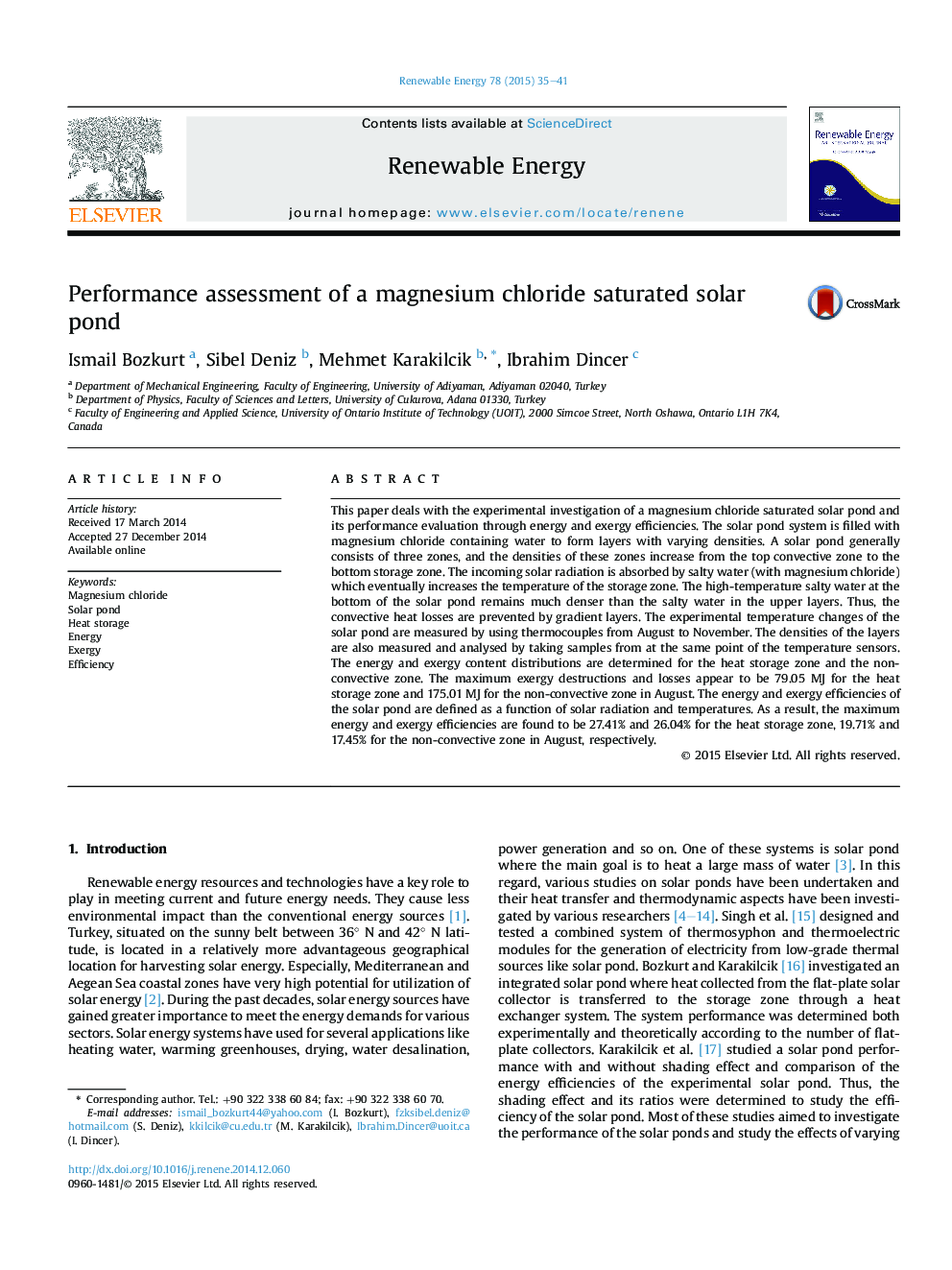| Article ID | Journal | Published Year | Pages | File Type |
|---|---|---|---|---|
| 6767099 | Renewable Energy | 2015 | 7 Pages |
Abstract
This paper deals with the experimental investigation of a magnesium chloride saturated solar pond and its performance evaluation through energy and exergy efficiencies. The solar pond system is filled with magnesium chloride containing water to form layers with varying densities. A solar pond generally consists of three zones, and the densities of these zones increase from the top convective zone to the bottom storage zone. The incoming solar radiation is absorbed by salty water (with magnesium chloride) which eventually increases the temperature of the storage zone. The high-temperature salty water at the bottom of the solar pond remains much denser than the salty water in the upper layers. Thus, the convective heat losses are prevented by gradient layers. The experimental temperature changes of the solar pond are measured by using thermocouples from August to November. The densities of the layers are also measured and analysed by taking samples from at the same point of the temperature sensors. The energy and exergy content distributions are determined for the heat storage zone and the non-convective zone. The maximum exergy destructions and losses appear to be 79.05Â MJ for the heat storage zone and 175.01Â MJ for the non-convective zone in August. The energy and exergy efficiencies of the solar pond are defined as a function of solar radiation and temperatures. As a result, the maximum energy and exergy efficiencies are found to be 27.41% and 26.04% for the heat storage zone, 19.71% and 17.45% for the non-convective zone in August, respectively.
Related Topics
Physical Sciences and Engineering
Energy
Renewable Energy, Sustainability and the Environment
Authors
Ismail Bozkurt, Sibel Deniz, Mehmet Karakilcik, Ibrahim Dincer,
